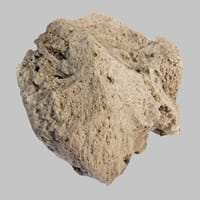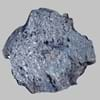Definition
Pumice is a volcanic rock that consists of highly vesicular rough textured volcanic glass, which may or may not contain crystals
Diatomite is a fine-grained sedimentary rock which is formed from consolidated diatomaceous earth
Discoverer
Unknown
Unknown
Etymology
From Old French pomis, from a Latin dialect variant of pumex
From diatom + -ite1
Class
Igneous Rocks
Sedimentary Rocks
Sub-Class
Durable Rock, Medium Hardness Rock
Durable Rock, Soft Rock
Group
Volcanic
Not Applicable
Other Categories
Fine Grained Rock, Opaque Rock
Fine Grained Rock, Opaque Rock
Texture
Vesicular
Clastic or Non-Clastic
Color
Beige, Colourless, Grey, Light Green, Light Grey, Pink, White, Yellow- grey
Grey, White, Yellow
Durability
Durable
Non-Durable
Appearance
Vesicular
Soft
Interior Uses
Decorative Aggregates, Flooring, Homes, Interior Decoration
Decorative Aggregates, Homes, Interior Decoration
Exterior Uses
As Building Stone, As Facing Stone, Garden Decoration, Paving Stone
Garden Decoration, Paving Stone
Other Architectural Uses
Curbing, Powder
Curbing
Construction Industry
As Dimension Stone, Cement Manufacture, for Road Aggregate, In landscaping and horticulture, Making natural cement, Production of lightweight concrete blocks
As Dimension Stone, Cement Manufacture, Construction Aggregate, for Road Aggregate, Landscaping, Making natural cement, Source of calcium
Medical Industry
As an abrasive in skin exfoliating products, In Chemical and Pharmaceutical Industry, Medicines and Cosmetics
Not Yet Used
Antiquity Uses
Artifacts
Artifacts
Commercial Uses
As a traction material on snow-covered roads, As an abrasive in pencil erasers, Fine abrasive used for polishing, Manufacture of Soap, Solvents, Dyes, Plastics and Fibres, Used in aquariums
Alumina Refineries, Animal feed filler, As a Feed Additive for Livestock, Creating Artwork, Drawing on blackboards, Fire resistant, Gymnasts, athletes and mountain climbers use for grip, In aquifers, Soil Conditioner, To ignite fire, Used as a filter medium, Used as an insecticide, Whiting material in toothpaste, paint and paper
Types
Scoria
Not Available
Features
Host Rock for Lead
Clasts are smooth to touch, Is one of the oldest rock, Smooth to touch, Very fine grained rock
Archaeological Significance
Monuments
Not Yet Used
Not Yet Used
Famous Monuments
Not Applicable
Not Applicable
Sculpture
Not Yet Used
Not Yet Used
Famous Sculptures
Not Applicable
Not Applicable
Figurines
Not Yet Used
Not Yet Used
Formation
Pumice rock forms when the magma cools so quickly that atoms in the melt are not able to arrange themselves into a crystalline structure.
Diatomite rock formed from the skeletal remains of single celled plants called diatoms. When diatoms die, their skeletal remains sink to the bottom of lakes and oceans etc. hence forming diatomite deposit.
Mineral Content
Aluminum Oxides, Calcite, Carbonate, Iron Oxides, Silica
Calcite, Clay, Clay Minerals, Quartz, Sand
Compound Content
Al, Aluminium Oxide, CaO, Carbon Dioxide, MgO, Silicon Dioxide
Ca, NaCl, CaO
Types of Metamorphism
Burial Metamorphism, Impact Metamorphism
Not Applicable
Types of Weathering
Biological Weathering, Chemical Weathering, Mechanical Weathering
Biological Weathering, Chemical Weathering, Mechanical Weathering
Types of Erosion
Chemical Erosion, Coastal Erosion, Glacier Erosion, Sea Erosion, Water Erosion, Wind Erosion
Chemical Erosion, Coastal Erosion, Wind Erosion
Grain Size
Fine Grained
Very fine-grained
Fracture
Planar
Not Available
Streak
White, Greenish White or Grey
White
Porosity
Highly Porous
Highly Porous
Compressive Strength
Not Available
Cleavage
Perfect
Non-Existent
Specific Gravity
2.86
2.3-2.4
Transparency
Opaque
Opaque
Density
0.25-0.3 g/cm3
2.49-2.51 g/cm3
Resistance
Impact Resistant, Pressure Resistant
Heat Resistant
Deposits in Eastern Continents
Asia
Afghanistan, Indonesia, Japan, Russia
Brunei, India, Indonesia, Malaysia, Singapore, Thailand, Vietnam
Africa
Ethiopia, Kenya, Tanzania
Cameroon, Chad, Ghana, Kenya, Malawi, Sudan, Tanzania, Togo, Zambia, Zimbabwe
Europe
Greece, Hungary, Iceland, Italy, Turkey
England, France, Germany, Spain, United Kingdom
Others
Not Yet Found
Not Yet Found
Deposits in Western Continents
North America
Bahamas, Barbados, Canada, Costa Rica, Cuba, Jamaica, Mexico, USA
Canada, USA
South America
Argentina, Chile, Ecuador, Peru
Colombia
Deposits in Oceania Continent
Australia
New Zealand, Western Australia
Adelaide, New Zealand, Queensland, Tonga, Victoria, Yorke Peninsula
All about Pumice and Diatomite Properties
Know all about Pumice and Diatomite properties here. All properties of rocks are important as they define the type of rock and its application. Pumice belongs to Igneous Rocks while Diatomite belongs to Sedimentary Rocks.Texture of Pumice is Vesicular whereas that of Diatomite is Clastic or Non-Clastic. Pumice appears Vesicular and Diatomite appears Soft. The luster of Pumice is earthy while that of Diatomite is dull. Pumice is available in beige, colourless, grey, light green, light grey, pink, white, yellow- grey colors whereas Diatomite is available in grey, white, yellow colors. The commercial uses of Pumice are as a traction material on snow-covered roads, as an abrasive in pencil erasers, fine abrasive used for polishing, manufacture of soap, solvents, dyes, plastics and fibres, used in aquariums and that of Diatomite are alumina refineries, animal feed filler, as a feed additive for livestock, creating artwork, drawing on blackboards, fire resistant, gymnasts, athletes and mountain climbers use for grip, in aquifers, soil conditioner, to ignite fire, used as a filter medium, used as an insecticide, whiting material in toothpaste, paint and paper.









